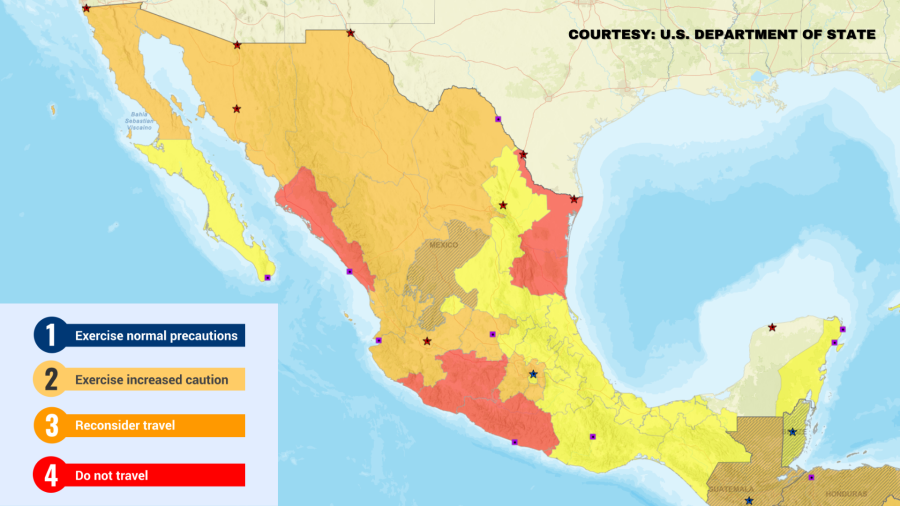(NewsNation) — As millions of Americans prepare for spring break, many will be weighing the risks of visiting Mexico, where recent security incidents have prompted safety alerts from the U.S. Embassy.
While it’s true Mexico has a significantly higher homicide rate (28 per 100,000 people) than the United States (7 per 100,000 people), data suggests violence against American citizens remains rare.
In 2021, 75 U.S. citizens died by homicide in Mexico, according to the State Department. That represents a small fraction of the more than 28.8 million Americans who went to the country over the same time period. Using those figures, the murder rate of U.S. citizens in Mexico was around 0.26 per 100,000 visitors, significantly lower than the rate in the United States.
But this year’s spring break comes amid a tumultuous period for America’s southern neighbor as high-profile cartel violence continues to make international headlines.
Last month, violence shut down multiple airports in Sinaloa and Sonora following the arrest of Ovidio Guzman — a high-ranking member in the Sinaloa cartel and son of Joaquin “El Chapo” Guzman. At one point, the gunfight became so intense that passengers on an Aeromexico flight were forced to take cover on the floor.
The shootout in January is just the latest incident of cartel violence that endangered innocent bystanders.
In August, drug cartel gunmen in Jalisco state and Guanajuato burned over two dozen stores and blocked streets with burning vehicles following a series of cartel arrests.
The U.S. State Department has issued its strongest possible “do not travel” warning for five Mexican states due to “crime and kidnapping”: Colima, Michocan, Sinaloa, Tamaulipas and Zacatecas.
A sixth state, Guerrero, is on the “do not travel” list due to “crime.”
Other more tourist-friendly areas are considered safer. The state of Quintana Roo, which is home to popular destinations such as Cancun, Playa del Carmen and Tulum, has a level 2 “exercise increased caution” warning. Cabo San Lucas, at the southern tip of Mexico’s Baja California peninsula, has the same designation.
Although cartel violence is significantly less common in tourist zones, recent protests have prompted safety alerts from the U.S. Embassy.

Last month, angry taxi drivers in Cancun blocked the main road between the airport and central tourist zone after a court ruling determined that Uber drivers did not have to obtain a permit to operate. Many tourists were forced to trek on foot or ride police trucks to catch their flights.
An alert from the U.S. Embassy warned that previous transportation disputes had “occasionally turned violent” and, in some instances, left U.S. citizens injured.
In some parts of the country, like Los Cabos, local officials have sought help from the United States to take on organized crime, according to the New York Times. Those efforts are meant to quell criminal activity that could jeopardize the region’s lucrative tourism industry.
Last year, more than 13 million American tourists flew to Mexico, a 27% increase from the year before and a sign that the post-pandemic travel boom is alive and well.
The uptick came as a much-needed boost for a tourism sector that accounts for as much as 8% of Mexico’s total GDP in a given year.
For those who do plan to visit, the State Department says travelers should exercise caution and avoid displaying signs of wealth like expensive jewelry. The government also recommends taking additional safety measures like sending taxi information to friends and family when riding alone.
